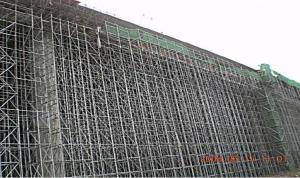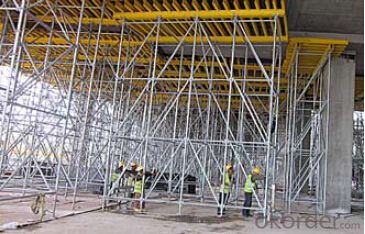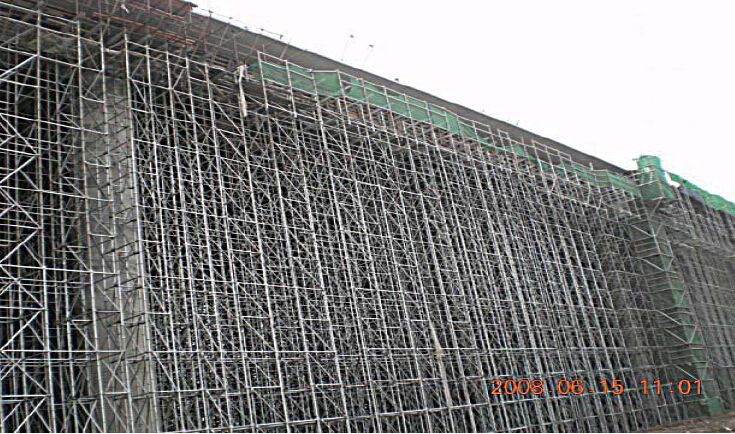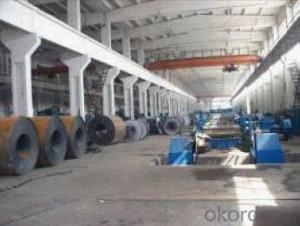Tower Scaffolding for formwork and scaffolding system
- Loading Port:
- Tianjin
- Payment Terms:
- TT OR LC
- Min Order Qty:
- 50 m²
- Supply Capability:
- 1000 m²/month
OKorder Service Pledge
Quality Product, Order Online Tracking, Timely Delivery
OKorder Financial Service
Credit Rating, Credit Services, Credit Purchasing
You Might Also Like
Tower Scaffolding
Shoring tower is an effective supporting system. It is easy to assemble and dismantlement, and
has excellent stability and bearing capacity. It has been widely used in the construction of industry
& residential buildings , bridges, tunnels and dam project, etc.
Characteristics:
◆ High degree of standardization.
◆ Easy storage and transportation
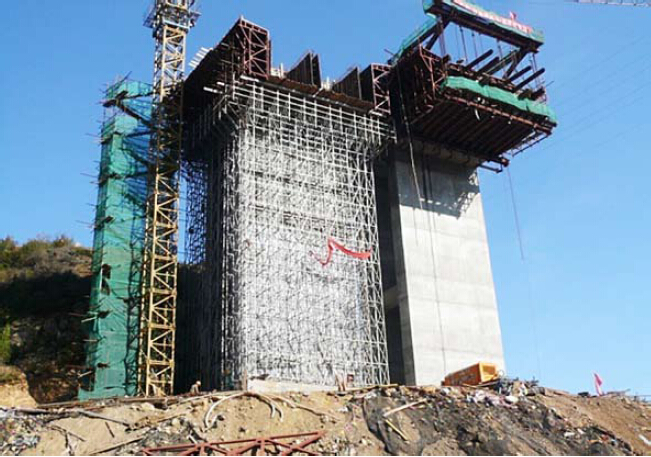
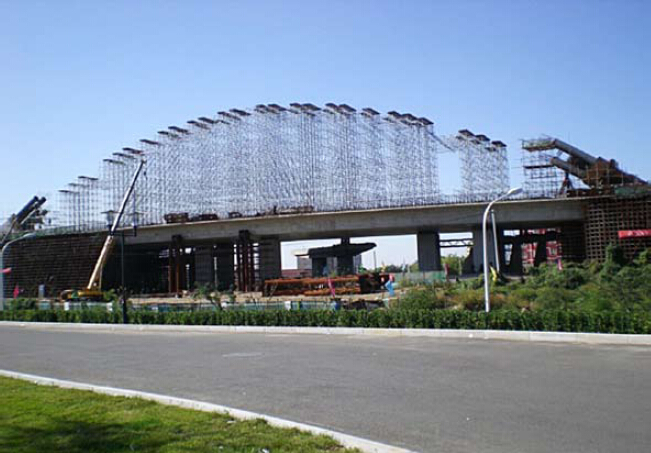
- Q: How does steel formwork affect the overall quality control of a construction project?
- Steel formwork can have a significant impact on the overall quality control of a construction project. Firstly, steel formwork provides a higher level of precision and accuracy compared to other types of formwork materials such as wood or plastic. This enables construction teams to achieve more precise dimensions and shapes, resulting in a higher quality finished product. Additionally, steel formwork offers better durability and stability, which reduces the risk of deformations or damages during the concrete pouring process. This ensures that the final structure maintains its integrity and structural stability over time. The use of steel formwork also minimizes the occurrence of surface imperfections, such as cracks or unevenness, which can significantly affect the aesthetic appearance and overall quality of the construction project. Furthermore, steel formwork allows for faster construction cycles, as it is reusable and can be easily assembled and dismantled. This not only saves time but also helps to maintain consistency in the construction process, leading to improved quality control. The ability to reuse steel formwork also reduces waste and environmental impact, promoting sustainable construction practices. Another important aspect of steel formwork is its ability to withstand high pressures and loads, making it suitable for constructing complex structures and high-rise buildings. This strength and stability contribute to the overall safety and resilience of the construction project, further enhancing its quality control. In conclusion, steel formwork positively affects the overall quality control of a construction project by offering precision, durability, stability, speed, and safety. Its use ensures that the construction project meets the desired standards, resulting in a high-quality final product that meets both functional and aesthetic requirements.
- Q: How does steel formwork handle formwork stripping and cleaning?
- Steel formwork handles formwork stripping and cleaning efficiently due to its durability and strength. It can withstand the pressure and force exerted during the stripping process without getting damaged. Additionally, steel formwork is easy to clean as it has a smooth surface, allowing for quick and thorough removal of any residual concrete or dirt. Its robust nature and low maintenance requirements make it a preferred choice for formwork stripping and cleaning in construction projects.
- Q: Can steel formwork be used for architectural concrete columns?
- Yes, steel formwork can be used for architectural concrete columns. Steel formwork provides a strong and durable support structure for the pouring and shaping of concrete columns. It allows for precise and smooth finishes, which is important for architectural designs. Additionally, steel formwork can be easily reused, making it a cost-effective option for constructing architectural concrete columns.
- Q: What are the common types of connections used in steel formwork systems?
- The common types of connections used in steel formwork systems include bolted connections, welded connections, and adjustable connections.
- Q: What are the cost implications of using steel formwork?
- The cost implications of using steel formwork can vary depending on several factors. Initially, the upfront cost of steel formwork may be higher compared to other alternatives like timber or plastic. However, steel formwork offers higher durability and longevity, reducing the need for frequent replacements or repairs. This can result in long-term cost savings as steel formwork is more resistant to wear and tear. Additionally, steel formwork allows for faster construction cycles due to its sturdiness and ease of use, potentially reducing labor costs. Overall, while the initial investment may be higher, the long-term benefits and reduced maintenance expenses make steel formwork a cost-effective choice in many construction projects.
- Q: How does steel formwork handle different concrete surface cleaning methods?
- Concrete construction projects can benefit from the durability and versatility of steel formwork. When it comes to cleaning the concrete surface, steel formwork proves to be highly effective and adaptable. Pressure washing is a common method used to clean concrete surfaces. Steel formwork can withstand the force of high-pressure water jets without sustaining any damage. The smooth and non-porous nature of the steel formwork surface facilitates the removal of dirt, debris, and other unwanted materials. By utilizing pressure washing, a smooth and even finish can be achieved. Chemical cleaning is another technique employed for cleaning concrete surfaces. Steel formwork is resistant to the majority of chemicals commonly used for cleaning purposes. This allows for the usage of various cleaning agents to eliminate stubborn stains, oil, grease, and other contaminants from the concrete surface. The chemical cleaning process can be carried out without causing any harm or deterioration to the steel formwork. Manual cleaning methods may also be utilized in certain instances. Steel formwork can withstand manual scrubbing, brushing, or scraping without any issues. The strength and durability of steel make it suitable for manual cleaning methods, which may be necessary when dealing with tough stains or debris that cannot be easily removed through other means. In conclusion, steel formwork is an ideal choice for handling various concrete surface cleaning methods. Its resistance to pressure washing, chemical cleaning, and manual cleaning ensures that the concrete surface can be effectively cleaned without damaging the formwork. This allows for a clean and visually appealing finish while maintaining the structural integrity of the formwork.
- Q: What are the features of the new building template?
- No need to be used again after the molding process. The periphery of the template with plate fixation, and a groove can be inserted, the template is extended.
- Q: Can steel formwork be used for retaining walls?
- Retaining walls can indeed utilize steel formwork. The popularity of steel formwork for retaining walls stems from its robustness and resilience. It effectively bolsters and stabilizes the concrete throughout the construction phase. The steel formwork's ability to withstand the immense pressure exerted by both the concrete and the soil behind the retaining wall guarantees the structural integrity of the wall. Moreover, the versatility of steel formwork enables the creation of diverse retaining wall designs, as it can adapt to different shapes and sizes. Ultimately, steel formwork proves to be a dependable and efficient choice for retaining walls, ensuring durability and ease of construction.
- Q: How does steel formwork affect the overall noise transmission in the building?
- Steel formwork can have a significant impact on the overall noise transmission in a building. Compared to other types of formwork materials, such as wood or plastic, steel is much denser and less porous. This density and lack of porosity make steel formwork highly effective in reducing the transmission of sound waves through the structure. When steel formwork is used, it creates a more rigid and solid structure, minimizing the vibrations caused by external noise sources. This rigidity helps to prevent the amplification and propagation of sound waves throughout the building. As a result, the overall noise transmission is significantly reduced, creating a quieter and more comfortable environment for the occupants. Furthermore, steel formwork can also act as a barrier to airborne sound, preventing sound waves from passing through the walls or floors. This is particularly important in buildings where privacy is crucial, such as hospitals, offices, or residential buildings. In addition to its soundproofing capabilities, steel formwork also offers other advantages. It is durable, reusable, and has a longer lifespan compared to other formwork materials. This not only reduces construction costs but also contributes to the sustainability of the building. Overall, the use of steel formwork in construction has a positive impact on the overall noise transmission in the building. Its density and rigidity effectively reduce the transmission of sound waves, creating a quieter and more comfortable environment for the occupants.
- Q: How does steel formwork improve construction site safety?
- Construction site safety is improved in several ways through the use of steel formwork. Firstly, the durability and strength of steel formwork make it capable of withstanding heavy loads and pressures, reducing the likelihood of accidents or collapses during construction. This increased stability ensures the safety of workers on-site. In addition, steel formwork is designed to be modular and easily assembled, which reduces the time and effort required for construction. This simplifies the process and minimizes workers' exposure to hazardous conditions, such as working at heights or in confined spaces. Furthermore, steel formwork is highly fire-resistant, which is a critical safety consideration on construction sites. In the event of a fire, steel formwork can withstand high temperatures and maintain its structural integrity, providing a safe escape route for workers and reducing the risk of injuries or fatalities. Moreover, steel formwork offers a smooth and level surface, which enhances the overall safety of the construction site. This eliminates any uneven or unstable surfaces that could potentially cause accidents, such as tripping or falling. Additionally, steel formwork is reusable and can be easily dismantled and reassembled for multiple construction projects. This not only saves costs but also reduces waste and minimizes the environmental impact of construction activities. By promoting sustainable practices, steel formwork contributes to creating a safer and healthier working environment for construction workers. In conclusion, steel formwork plays a crucial role in enhancing construction site safety by providing stability, fire resistance, efficient assembly, and a smooth surface. It helps to mitigate risks and hazards, ensuring the well-being of workers and improving overall construction site safety.
Send your message to us
Tower Scaffolding for formwork and scaffolding system
- Loading Port:
- Tianjin
- Payment Terms:
- TT OR LC
- Min Order Qty:
- 50 m²
- Supply Capability:
- 1000 m²/month
OKorder Service Pledge
Quality Product, Order Online Tracking, Timely Delivery
OKorder Financial Service
Credit Rating, Credit Services, Credit Purchasing
Similar products
Hot products
Hot Searches
Related keywords

